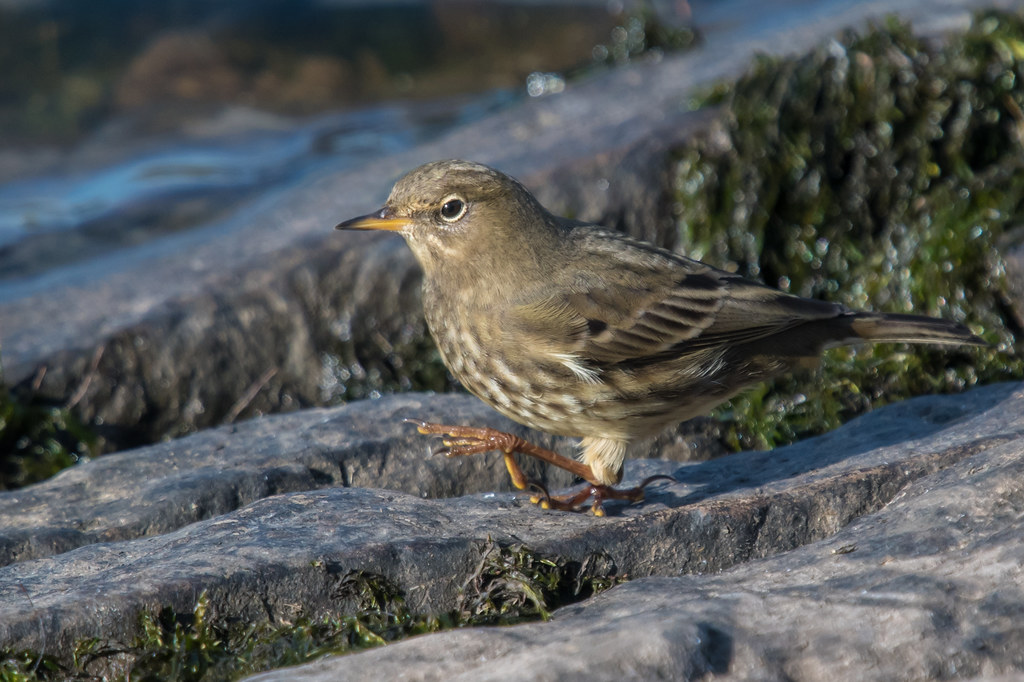
Tim writes: I found this Rock Pipit at Ingbirchworth Reservoir in South Yorkshire in early October. That is at least 60 miles from the nearest coast and is 850 feet above sea level but Rock Pipits are rarely found away from the coasts where they breed. Here is the UK distribution map so you can see for yourself.
There are two races of Rock Pipits that breed in Europe; petrosus breeds in Britain and Ireland and NW France whereas littoralis breeds in Fennoscandia and the Baltic countries. British petrosus are largely resident though juveniles do make local movements (apart from a single exceptional bird that moved from Fair Isle to Tayside). But Baltic birds of the race petrosus habitually migrate to avoid the icy winter. Ringing has shown that these birds move generally south-westwards to reach Britain, but in winter the two races are indistinguishable. So I cannot be certain that this bird is a Scandinavian Rock Pipit of the race littoralis, but it is much more likely than a British petrosus. In spring Scandinavian birds develop a pale eyebrow, which is how we know that many birds wintering in East Anglia are Scandinavian birds. If you look at the distribution map you will see that Rock Pipits are largely absent from sandy coasts. As their name suggests, they prefer rocky coasts.
Rock Pipits are supposed to have dark legs compared to the other British pipits, but this one’s legs were at the pale end of the range. The soles of its feet look decidedly yellow. Rock Pipits are greyer and less streaked than either Meadow or Tree Pipits, with smudgy breast markings.
[registration_form]